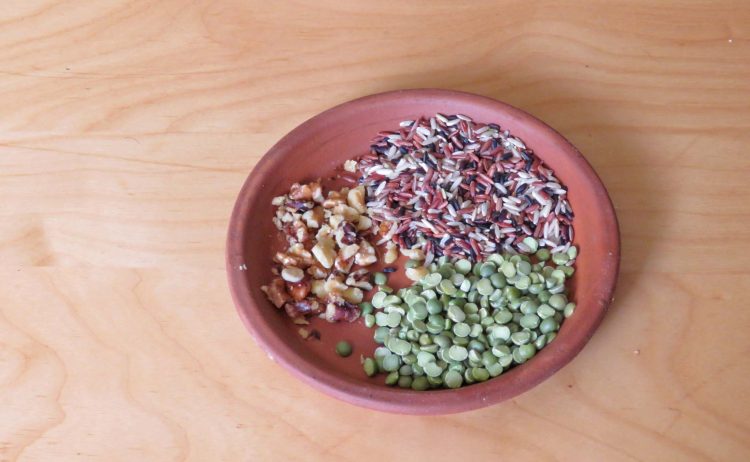A Culinary Exploration: What Do Birds Eat?”

Birds, those feathered marvels that grace our skies with their graceful flight and melodious songs, are not just a visual delight but also play a crucial role in maintaining ecological balance. While we admire their aerial acrobatics and vibrant plumage, have you ever wondered what fuels these avian wonders? Let’s embark on a culinary journey into the diverse diets of our feathered friends, exploring the intricate and fascinating world of what birds eat.
Dietary Diversity:
Just like humans, birds exhibit a wide range of dietary preferences. Their food choices are influenced by factors such as species, habitat, beak structure, and season. Birds can be broadly categorized into herbivores, omnivores, and carnivores, each adapted to exploit specific food sources.
Herbivorous Delights:
Herbivorous birds primarily feed on plant-based foods such as fruits, seeds, nectar, and foliage. One iconic example of an herbivorous bird is the hummingbird. With its long, specialized bill and rapid wing beats, the hummingbird is well-equipped to extract nectar from flowers, sustaining itself on a diet rich in sugars.
Additionally, seed-eating birds, like finches and sparrows, play a crucial role in seed dispersal and contribute to the regeneration of plant life. These birds have adapted beaks designed for cracking open seed shells and extracting the nutrient-rich interiors.
Omnivorous Feasts:
Many birds fall into the omnivorous category, meaning they consume a mix of plant and animal matter. Crows and ravens, for instance, are known for their intelligence and adaptability. Their omnivorous diet includes fruits, seeds, insects, small mammals, and even carrion.
Waterfowl, such as ducks and geese, are also omnivores. They feed on aquatic plants, insects, and small fish. The diversity in their diet showcases the adaptability of birds to different environments, whether it’s a freshwater pond or a coastal wetland.
Carnivorous Pursuits:
Birds of prey, or raptors, are the quintessential carnivores of the avian world. These include eagles, hawks, falcons, and owls. Equipped with sharp talons and beaks, they are skilled hunters that prey on other birds, small mammals, reptiles, and even fish. Owls, with their nocturnal hunting habits, have specialized feathers for silent flight, allowing them to surprise their prey in the dark.
Seabirds, such as gulls and terns, also fall into the carnivorous category. Their diet comprises fish, squid, and other marine creatures. These birds are well-adapted to life over the open ocean, with strong wings for long-distance flight and keen eyesight to spot prey from above.
Specialized Diets:
Some bird species have evolved highly specialized diets to meet their nutritional needs. For example, the flamingo’s iconic pink hue is a result of its diet rich in beta-carotene, obtained from the algae and crustaceans it consumes. The specialized filter-feeding bill of flamingos allows them to sift through mud and water, extracting tiny organisms.
The Puffin, with its distinctive, colorful beak, is another example of a bird with a specialized diet. Puffins feed primarily on fish, using their beaks to catch and carry multiple small fish at once. The unique shape of their bills aids in efficient hunting and feeding.
Migration and Seasonal Changes:
Birds are known for their remarkable migratory journeys, covering thousands of miles each year. During these migrations, their dietary requirements may change based on the availability of food along their route. Many migratory birds, such as the Arctic Tern, switch from insect-rich diets during the breeding season to a more varied diet that includes fish during migration.
Seasonal changes also influence the diets of non-migratory birds. In colder months, when insects and fruits may be scarce, birds may shift to alternative food sources such as seeds and berries. Understanding these dietary adaptations is essential for conservation efforts and providing supplemental food during harsh weather conditions.
Human Interaction and Bird Feeders:
In urban and suburban areas, human influence on bird diets is becoming increasingly evident. Bird feeders, stocked with seeds, suet, and nectar, attract a variety of bird species to residential areas. Common visitors include sparrows, chickadees, cardinals, and finches.
While bird feeders provide supplemental nutrition, it’s crucial to ensure that the food offered is appropriate for the specific dietary needs of the birds in the area. Additionally, maintaining hygiene at bird feeders helps prevent the spread of diseases among bird populations.
The Impact of Environmental Changes:
Climate change, habitat loss, and pollution can significantly affect the availability of food for birds. Changes in temperature and precipitation patterns can influence the abundance of insects, fruits, and seeds, directly impacting the food sources of various bird species.
Conservation efforts must consider the interconnectedness of ecosystems and address the root causes of environmental changes. Protecting natural habitats, creating wildlife corridors, and reducing pollution are essential steps in ensuring a stable and diverse food supply for birds.
Conclusion:
Birds, with their incredible diversity and adaptability, showcase a wide array of dietary preferences. From the delicate sipping of nectar by hummingbirds to the powerful swoop of raptors hunting their prey, the culinary habits of birds are as varied as the species themselves. Understanding these dietary intricacies not only deepens our appreciation for these winged wonders but also highlights the delicate balance that sustains the avian world. As stewards of the environment, it is our responsibility to protect and preserve the habitats that provide the diverse array of foods that keep our feathered friends aloft and thriving.
What do herbivorous birds eat? A1: Herbivorous birds primarily consume plant-based foods, including fruits, seeds, nectar, and foliage. Their diets are adapted to extract nutrients from plants through specialized beaks and feeding behaviors.
Are all birds herbivores, or do some eat meat? A2: No, not all birds are herbivores. Birds can be classified into herbivores, omnivores, and carnivores based on their dietary preferences. Some birds, like eagles and hawks, are carnivores and prey on other animals.
What is the role of seed-eating birds in the ecosystem? A3: Seed-eating birds, such as finches and sparrows, play a crucial role in seed dispersal. By consuming and then excreting seeds in different locations, they contribute to the regeneration of plant life and the overall biodiversity of ecosystems.
Do birds eat only during the day, or do they feed at night too? A4: Birds exhibit a range of feeding habits. While many birds are diurnal and feed during the day, some, like owls, are nocturnal and hunt at night. Their specialized adaptations, such as enhanced night vision, enable them to locate prey in the dark.
What types of food do omnivorous birds eat? A5: Omnivorous birds have a varied diet that includes both plant and animal matter. Examples include crows, ravens, and waterfowl like ducks and geese. Their diet may encompass fruits, seeds, insects, small mammals, and even carrion.
How do birds of prey hunt and what is their main prey? A6: Birds of prey, or raptors, hunt using their sharp talons and beaks. They primarily prey on other birds, small mammals, reptiles, and sometimes fish. Eagles, hawks, falcons, and owls are examples of birds of prey.
Why do some birds have specialized beaks? A7: Birds develop specialized beaks to adapt to their specific dietary needs. For example, the long, slender beak of hummingbirds is designed for extracting nectar, while the powerful beak of eagles is used for tearing meat.
How does migration impact the diets of birds? A8: Migration can significantly impact bird diets. During migration, birds may change their food sources based on availability along their route. For example, some birds switch from insect-rich diets during the breeding season to a diet that includes fish during migration.
What is the impact of human-provided bird feeders on bird diets? A9: Bird feeders stocked with seeds, suet, and nectar attract birds to residential areas. While these feeders provide supplemental nutrition, it’s essential to offer appropriate food and maintain hygiene to prevent the spread of diseases among bird populations.
How can environmental changes affect bird diets? A10: Environmental changes, such as climate change and habitat loss, can impact the availability of food for birds. Changes in temperature and precipitation patterns can affect the abundance of insects, fruits, and seeds, directly influencing the food sources of various bird species. Conservation efforts are crucial to address these challenges.






